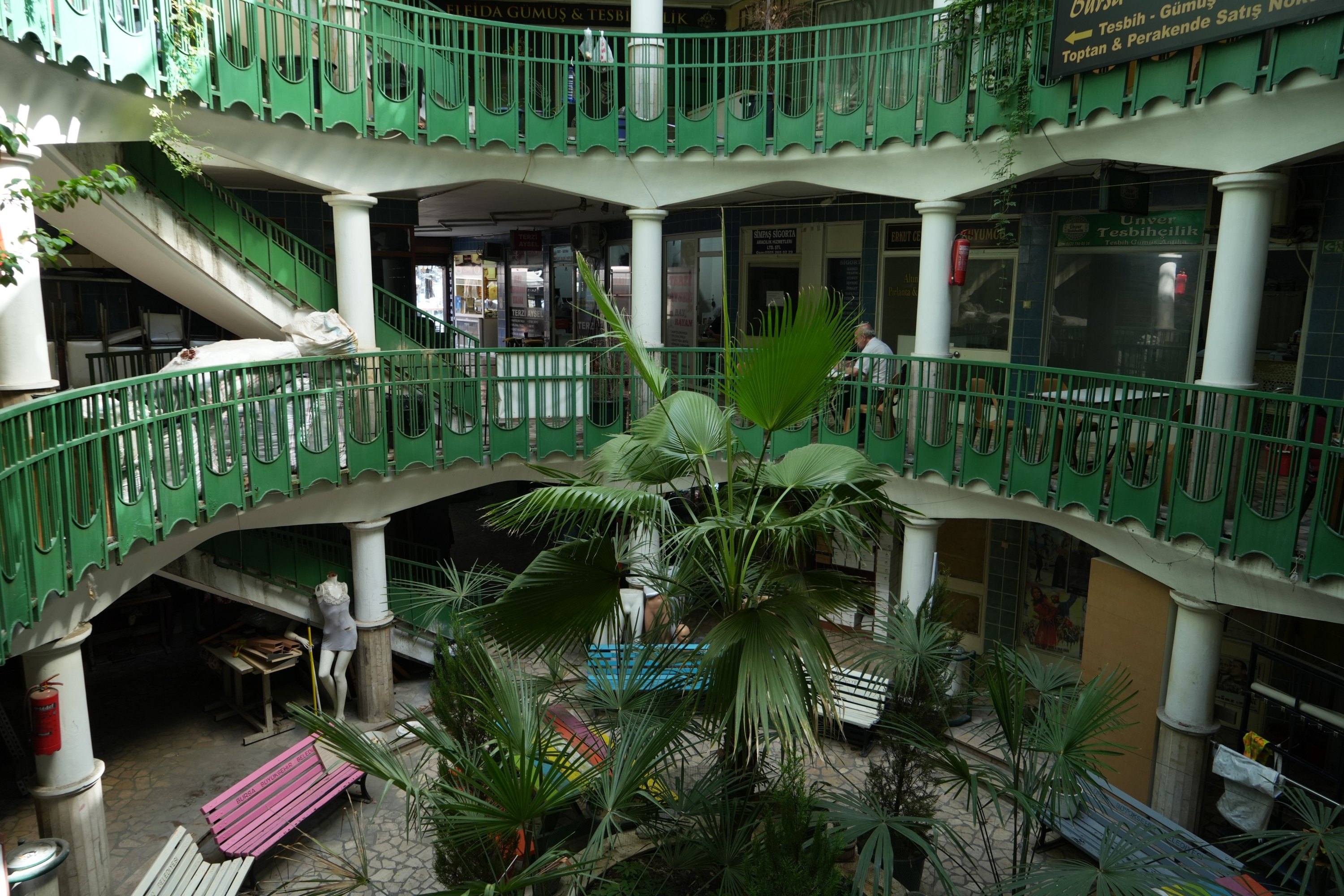Located in the Tahtakale neighborhood of Bursa's Osmangazi district, the Ahşap Han stands out for its distinctive architecture and rich history. Situated in northwestern Türkiye, Bursa is known for its historical landmarks and vibrant cultural heritage. Ahşap Han, with its unique wooden construction, offers a glimpse into the past of the Ottoman Empire and has become a popular destination for both local and international tourists.
The construction of Ahşap Han began in the 1890s during the Ottoman Empire and was completed in the early 1900s. Crafted entirely from wood, the han was designed to serve caravans traveling through the region. A notable feature of the han is its open roof at the center of the ground floor, which was used as a stable.

This design choice allowed the smells from horses and camels to escape, ensuring that merchants and travelers staying in the han were not disturbed by the odors. After several decades of service, the han faced the risk of collapse. In the 1960s, it was demolished and rebuilt, with efforts made to preserve its exterior architecture while updating the interior to reflect the conditions of the time.
Today, the Ahşap Han retains its historical charm and continues to attract visitors with its nostalgic ambiance. In recent years, Ahşap Han has become a favorite spot for tourists exploring Bursa. The han’s blend of historical significance and well-preserved architecture makes it a sought-after destination.
Tourists are drawn to its picturesque setting, often capturing the beauty of the han in photographs shared across social media platforms. The han’s appeal extends beyond Turkish visitors, European tourists, including those from South Korea, England, France, Germany, and Belgium, are flocking to Ahşap Han. Hasan Basri Karnabat, one of the shopkeepers at the han and a local guide, highlights the growing interest in the site.
"This han, built in the 1890s and opened in the 1900s, is historically known as 'Ahşap Han.' Today, it is also referred to as 'Akarsu Ipekçi Iş Sarayı,' but it remains a testament to Ottoman architectural style," Karnabat explains. He adds, "During its operational period, the han was used primarily for lodging.
The open center of the roof was a practical design to allow stable smells to escape, keeping the rooms fresh." "Over the past four years, as more people have seen photos of the han on social media, curiosity has led to an increase in visitors. Tourists from various countries are keen to experience this piece of history firsthand," he said.
.



















